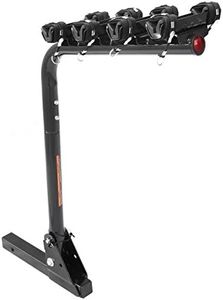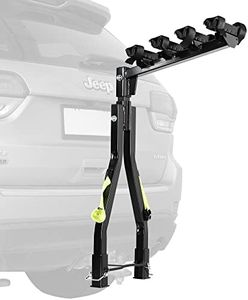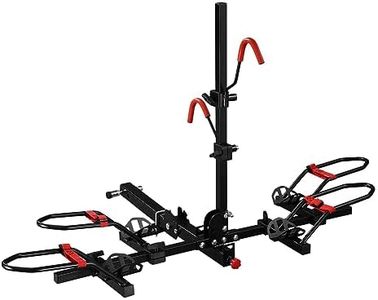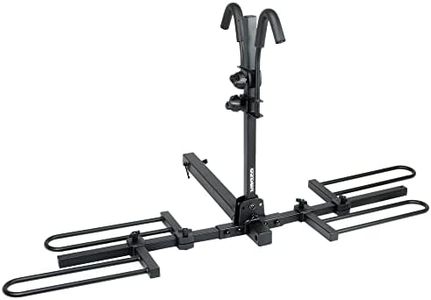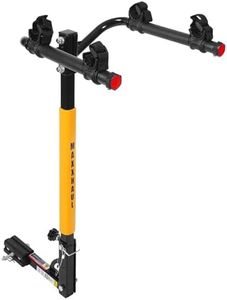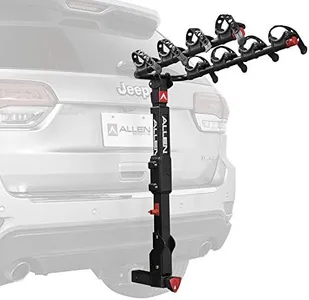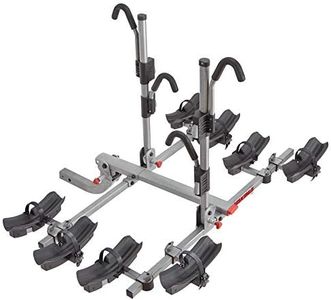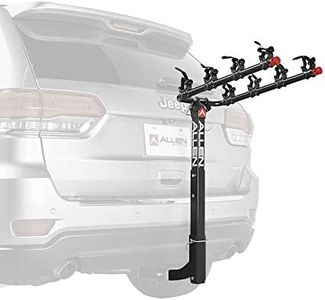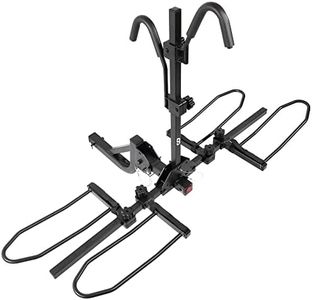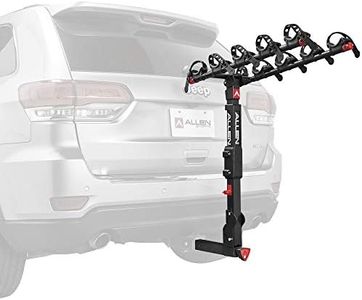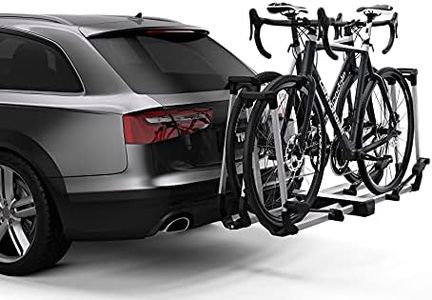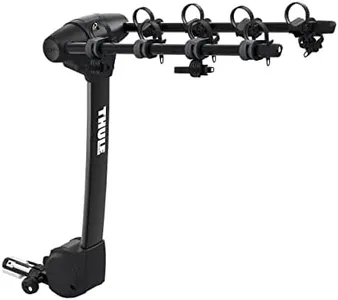We Use CookiesWe use cookies to enhance the security, performance,
functionality and for analytical and promotional activities. By continuing to browse this site you
are agreeing to our privacy policy
10 Best Hitch Bike Racks
From leading brands and best sellers available on the web.Buying Guide for the Best Hitch Bike Racks
Choosing the right hitch bike rack is all about matching your transportation needs with your vehicle and biking lifestyle. Before you start shopping, ask yourself how many bikes you need to carry, what kind (like road, mountain, or kids' bikes), and what kind of vehicle you'll be attaching the rack to. You should also consider how often you'll need the rack, and how much storage space you have when it's not in use. By understanding these factors, you can focus on the features that matter most and avoid the hassle of buying something that doesn't fit your needs.Bike CapacityBike capacity refers to the number of bikes the rack can carry at once. This is important because buying a rack that's too small will mean you can't take all your bikes, while a rack that's too big might be more cumbersome to handle and store. Hitch racks generally come in two, three, or four-bike capacities. If you usually ride alone or with one other person, a two-bike rack will be more compact and easier to use. For families or groups, look at three or four-bike models. Think about your most common biking scenario – it's best to get a rack that matches your typical group size rather than occasional big outings.
Rack Type (Platform vs. Hanging)Hitch bike racks are generally either platform-style, where bikes sit in trays, or hanging-style, where bikes hang from arms. Platform racks are popular because they keep bikes stable, usually fit a wide variety of bike shapes, and are easier to load, especially for heavier or unusual frames. Hanging racks are lighter and often allow for more bikes at once, but may require adaptors for some frames and can cause bikes to sway and touch each other more. Choose platform racks if you have heavier bikes, e-bikes, or want extra security for your bikes. Pick hanging racks for lighter bikes or if you frequently need to carry more than two bikes.
Hitch Size CompatibilityThe hitch size is the part of your vehicle where the rack attaches, commonly coming in 1.25-inch and 2-inch receiver sizes. Getting this right is crucial because the wrong size rack won't fit your hitch at all. Most light and mid-sized vehicles have a 1.25-inch receiver, while trucks and SUVs often have a 2-inch receiver. Some racks come with adapters to fit both, but check your vehicle’s hitch size before shopping to avoid compatibility issues.
Bike Weight LimitEach rack has a maximum weight it can carry per bike and sometimes also a total limit. This matters if you have heavy bikes, such as electric bikes or downhill mountain bikes which weigh much more than standard road or kids’ bikes. Entry level racks are usually fine for bikes under 35 pounds, while more robust racks can hold bikes up to 60 pounds or more. Add up the weights of your bikes and make sure the rack can safely handle them for both individual bikes and the total.
Ease of Installation and UseHow easy the rack is to mount on your car and load bikes onto it makes a big difference, especially if you’ll be taking it on and off regularly or loading up alone. Platform racks tend to be heavier but easier to load; hanging racks are lighter but can be trickier to work with. Look for tool-free installation features, tilt-down or swing-away mechanisms for trunk access, and intuitive bike attachment systems if you prioritize convenience. If you usually travel or bike solo, something simple and light may be your best choice.
Security FeaturesRacks often include features like integrated locks for the bikes and hitch, which help prevent theft when you stop during your trip. Some have built-in cable locks or lock cores, while others have provisions for adding your own locks. If you’ll be leaving your bikes unattended on the rack for any time, especially in public areas, security becomes much more important. Choose a rack with strong locking systems if bike security is a top worry for you.
Rack Storage and FoldingWhen the rack is not in use, you’ll need to store it somewhere, either on your vehicle or in your garage. Some racks fold up flat against your car when empty, some trays and arms fold, and others are more bulky. If storage space at home is tight, or if you plan to keep the rack mounted but out of the way, look for racks that fold or have a compact storage profile. If you have lots of storage, this is less of a concern.
